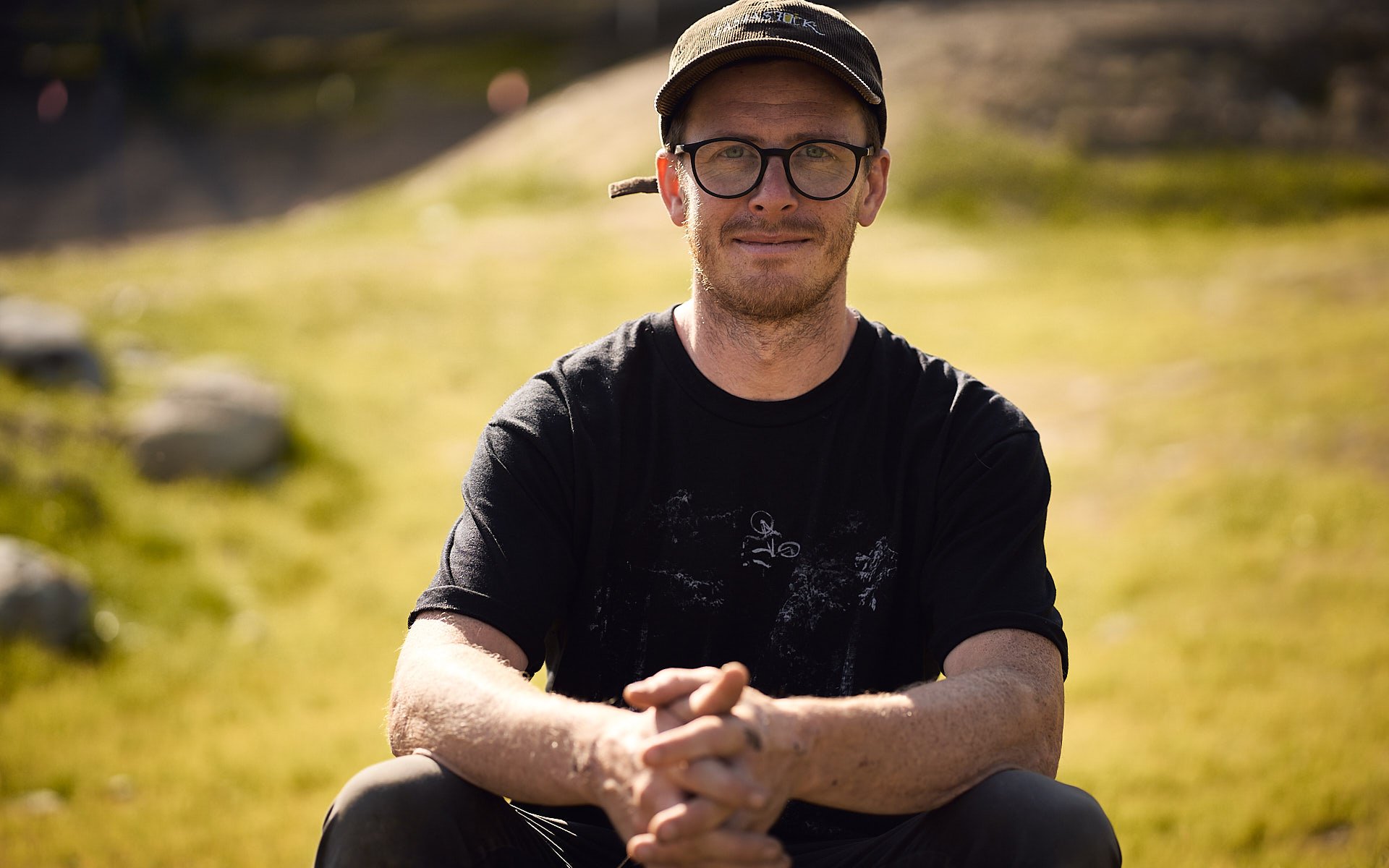
INTERVIEW & AUDIO
Red Bull Joyride Course Preview with Lead Builder Justin Wyper
The first time I met Justin Wyper was at our Airprentice event in 2008, when it was still held at Whistler. Three things stood out about him. First: he didn't have a trail bike, so for the downhill portions of the weekend, he had rented a DH bike. For a young guy of about 19, that showed initiative, but also big stones.
The second thing that stood out was his riding. He boosted huge airs with plenty of tricks in his bag, and was pushing right to the edge. Every now and then he would let out a whoop at the apex of his jumps, which was either terrifying or hilarious, depending on whether it was the first time you heard him do it, or the tenth.
A big part of picking an Airprentice winner came down to personality, and the third thing I remember well was riding the lift with Justin, just the two of us, somewhat expecting he'd be either quiet and shy, or wild and loud. Instead he was thoughtful and well-spoken, and talked about things he was interested in doing in the future. I was struck by the fact that a 19-year-old ripper competing for a pretty huge sponsorship package at the time was not solely focused on winning, nor was becoming a pro rider the only thing he cared about. At 19, I mostly wondered where my next cold beer was coming from. Wyper had other things on his mind.
He went on to win Airprentice, and had a successful slope and freeride career. At 33, he's hardly retired as a rider, famously nailing a cameo alongside Brandon Semenuk in Realm last September, after leading the build for that project, which ties in with Joyride in 2022, because that video had a voting component to choose a feature to appear in this year's course. More on that in a bit.
Deniz and I caught up with Justin on Friday morning as the riders were starting to practice on the day before Joyride. Below is the transcript of our chat, but we also included the audio clips so you can choose how you'd like to take it in. Apologies for the audio quality as it was just my phone, and it cuts out once or twice as we negotiated a hike along the course, but despite that it makes for a good listen if you prefer not to read it all.
The course looks incredible and rider feedback has been overwhelmingly positive - in fact, that's why we decided to do this interview in the first place, thanks to a tip from Hailey Elise.
Thanks for your time, Justin. It was great to catch up a bit and get your thoughts. Follow Justin here: @wypdaddy
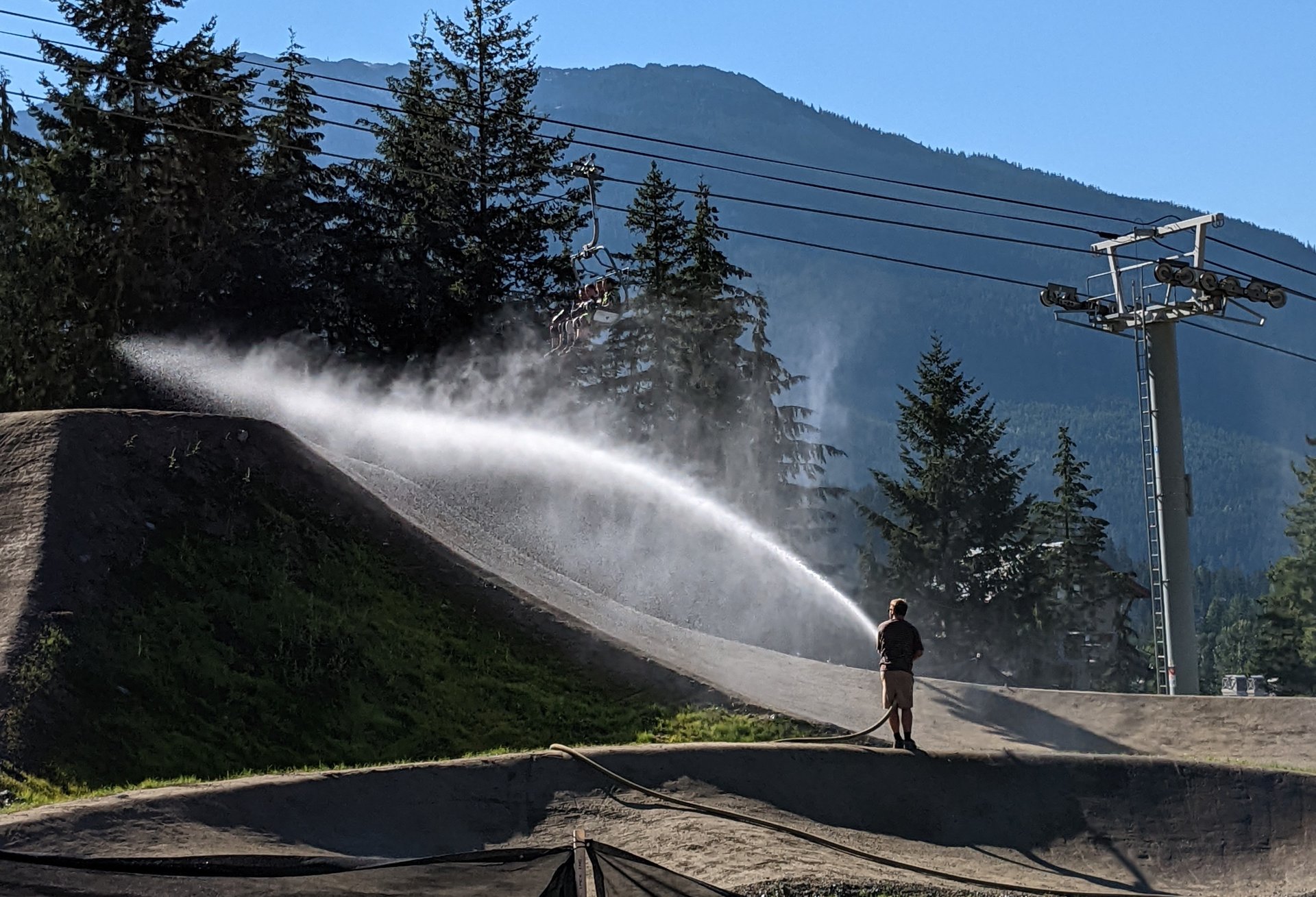
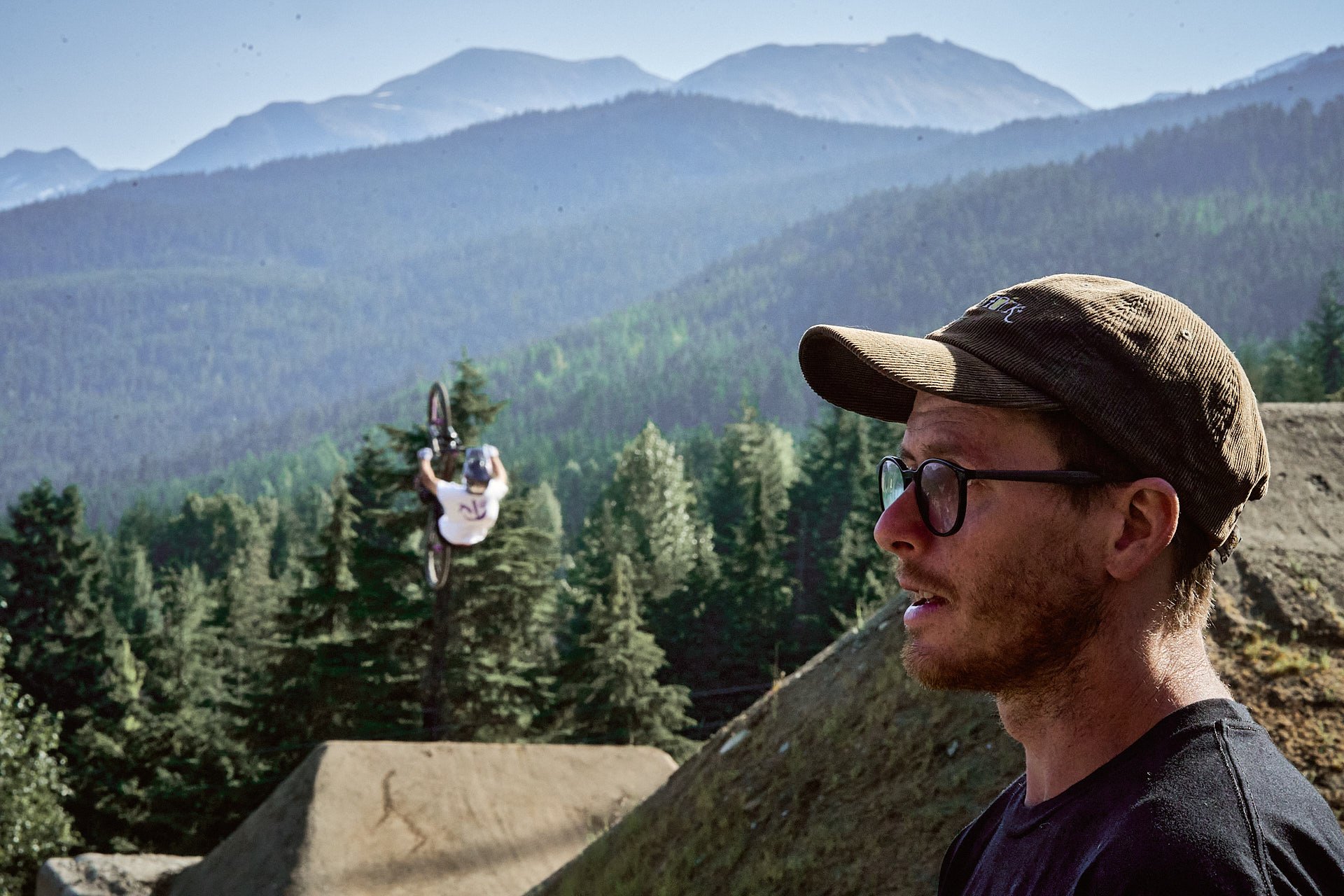
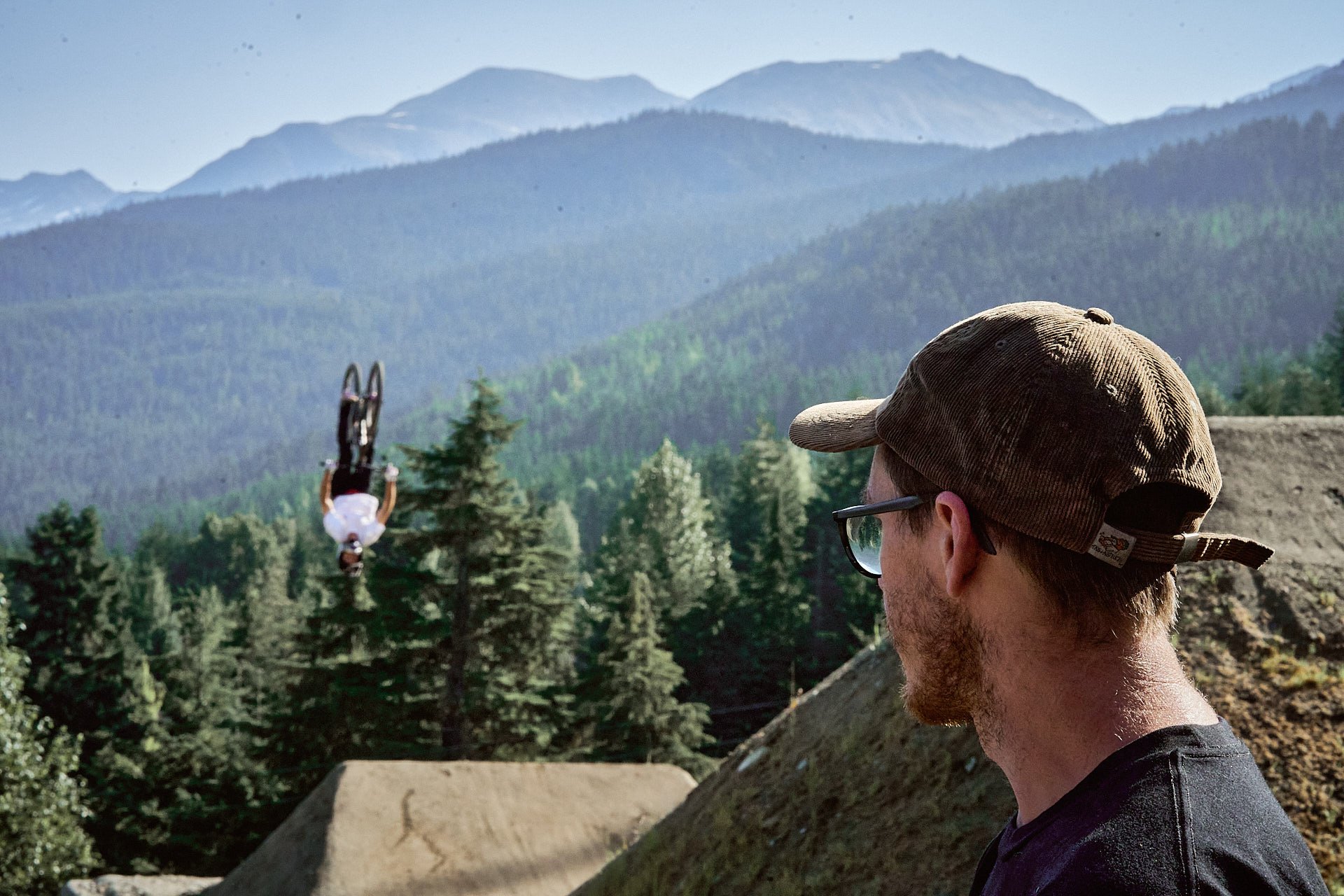
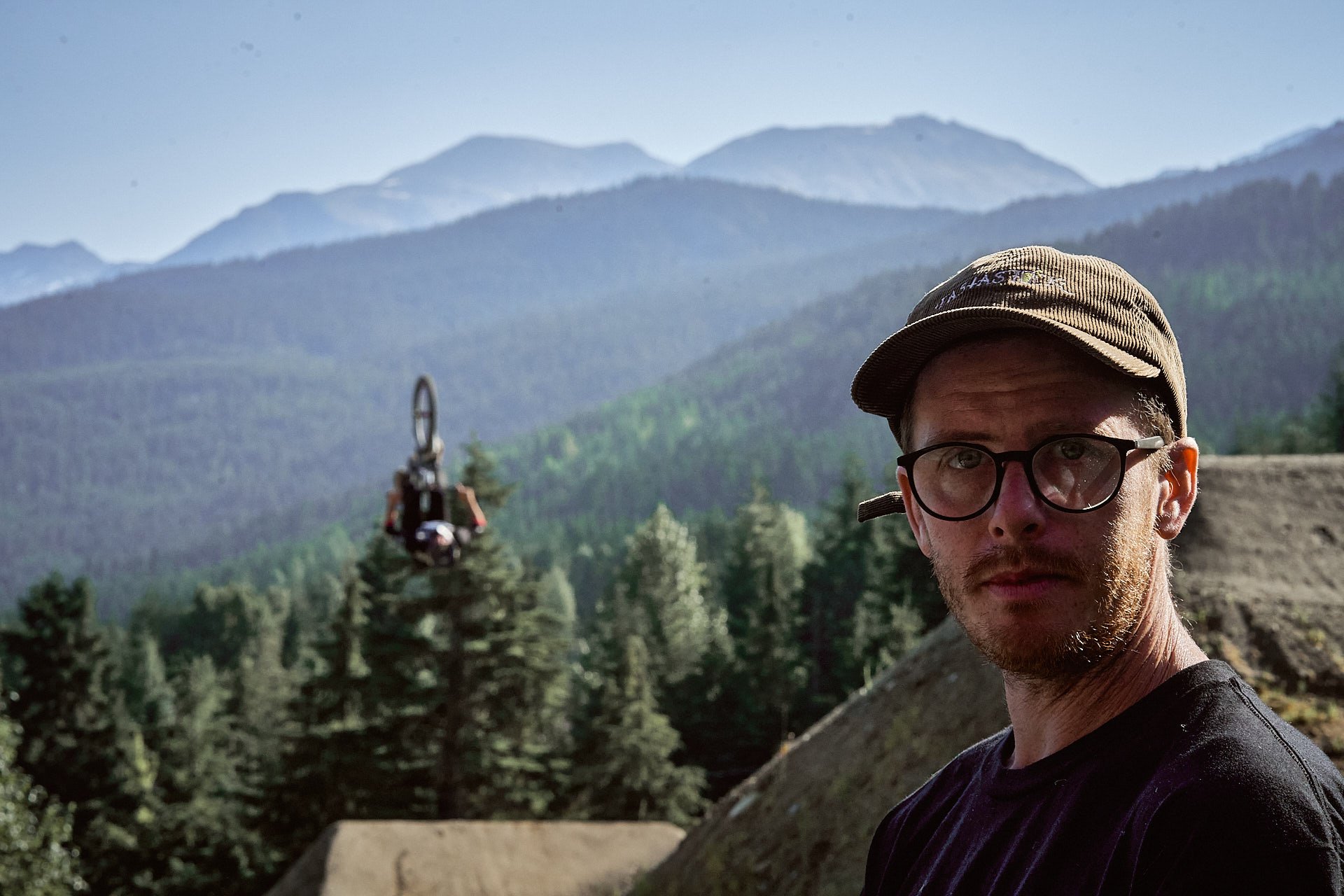
Here's audio from part one of our chat.
Pete Roggeman / NSMB - All right, Justin, do you just want to start with some basic stuff? Like when did you start on the design? How long has it taken?
Justin Wyper - Yeah, for sure. With the build this year for the design, we started a little bit later. And when we have in the past, we generally have like a big roundtable discussion with a bunch of athletes and people from Red Bull and other people that, you know, take part in the discussion. Anyways, because of COVID in the setback, and everything was really last minute kind of this whole thing coming together this year, no one really knew anything was really going to happen until January. So at that point, Red Bull and Crankworks reached out to Paddy (Kaye) and myself and asked us to come up with a design. And that's really where we started just doodling stuff down on paper. And then after that, beginning of May is when we got shovels in the ground here and started to actually put the course together.
And compared to prior years, how much different has that timing been?
The build is always the same. Like we generally always start in May, kind of right when the snow melts, just takes that much time to move this amount of dirt and tidy everything up. But as far as the planning and course design, that was definitely a little more packed this year, closer to the start date than it ever has been. Generally it's, you know, the event happens, and two or three months later, we're already kind of planning for the next one.
What's happened in the last couple of years? Or can you sort of talk about changes that you've taken, you and Paddy and whoever else on the team, in the design process? Like has that process changed?
Yeah, the design process has changed quite a bit. And it's just as the sport evolves, I think it comes down to how you're going to help the sport progress with your design, you know? For a while there, we were kind of focused on making jumps bigger and having more air time. And so people can fit more maneuvers and tricks in, and now it's kind of like it's shrinking down a little bit. And the courses are becoming a little safer, a little gibbier so like a little bit more technical and stuff like that. And real quality air time over quantity. So it's like, you know, two small jumps are better than one big one, because the riders are able to showcase things and, and set themselves apart with smaller features. So yeah, the design has changed quite a bit over the years. And it constantly is evolving with how the riding is evolving. We're always kind of taking feedback from the riders, seeing what they're doing, not only in contests, but on their social media, what they're posting what they're writing on a day to day basis, and how we can inject new creative ideas into courses to kind of push the sport and help it evolve.
Are there some riders that are more vocal about feedback and about how much they want to collaborate than others? And can you maybe give me an example of something that might have been brought up or taken into account this year?
Yeah, I generally reach out to a bunch of athletes that have been doing multiple Crankworx, and past riders as well. So I speak a lot with Brandon (Semenuk), just as a friend, off the cuff. You know, he gives me a lot of feedback on like, what he thinks, and then Emile, Nicholi (Rogatkin), and Eric Fedko. I reached out to them a lot in regards to this course design. And just ask, what they've liked in previous courses, what they would like to see change, things that they've liked from other contests on the circuit, and how we can inject those kinds of things. The quarter pipe was a big thing that athletes really wanted to see back in events. And I agree, so it was something that we were really excited to put in here. And then obviously, like the satellite dish came from Brandon and myself a little project that we did (Realm), so we had a lot of influence on that. A lot of what I do is from rider feedback because you know, they're the ones that are riding it and really putting the show on so they've got to be happy.
Tell me a little little bit about what the significance is of having quarter pipes on the course again, and maybe why they left and why they're back.
Yeah, it's just one of those things that just gives the riders the quarter pipes give the riders something where they can set themselves apart, you know? It's really hard to do a crazy, crazy maneuver on them because they're fairly high risk. So you'll see lots of tail whips and little flares and 540s and stuff like that often. But if a rider can go outside of that and do something that the rest of the field isn't doing, it really sets them apart. And it's just a little bit smaller and more technical riding like kind of skatepark-y, jib style, where the riders can really showcase their bike handling skills as opposed to just like who can throw the biggest tricks, but also who has the best all round riding ability, right? So it just injects a little bit of that. So instead of having courses that just focus on the person with the best trick wins the contests, not only the person with the best trick, but the person with the best overall bike handling skills that you know will come out on top.
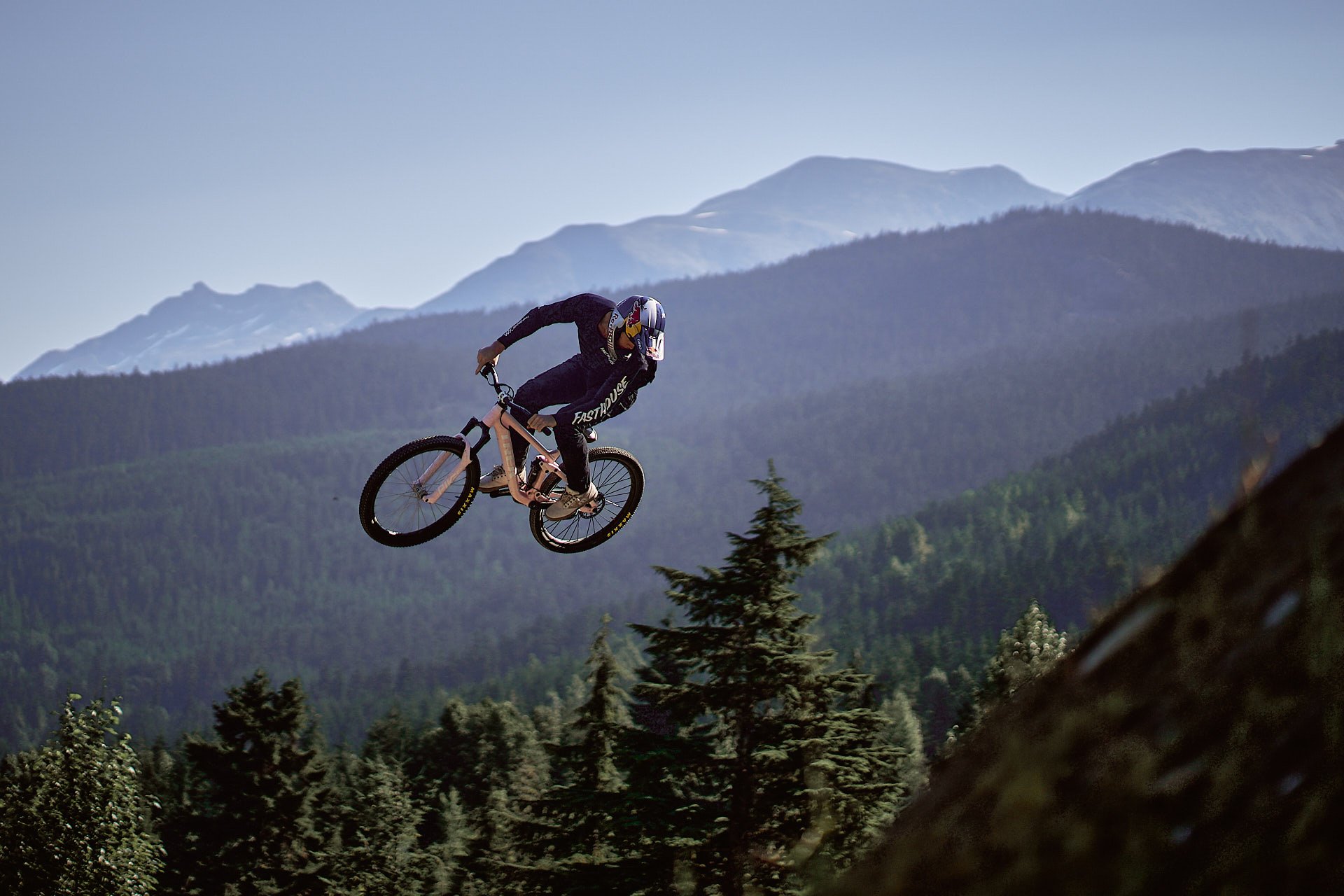
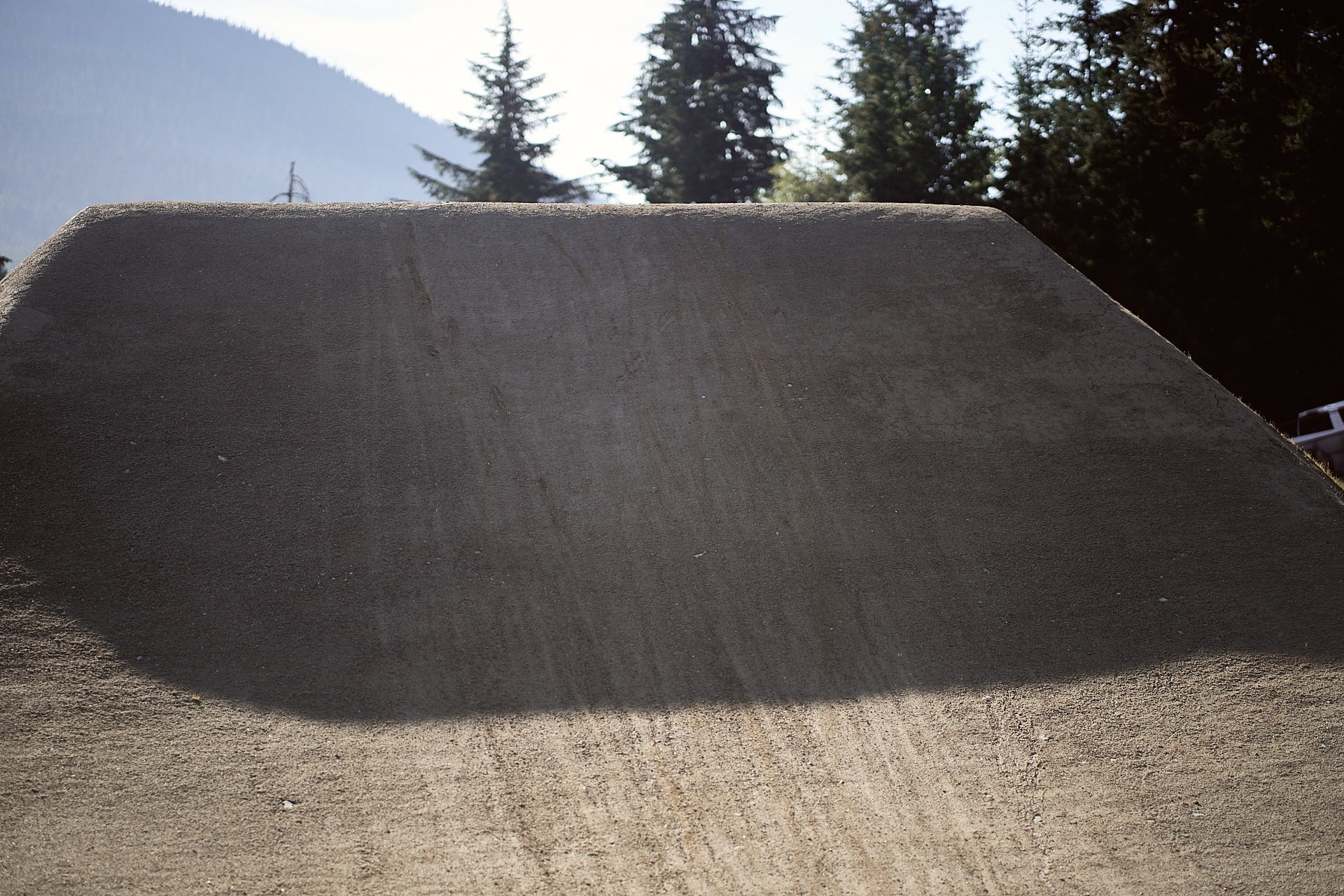
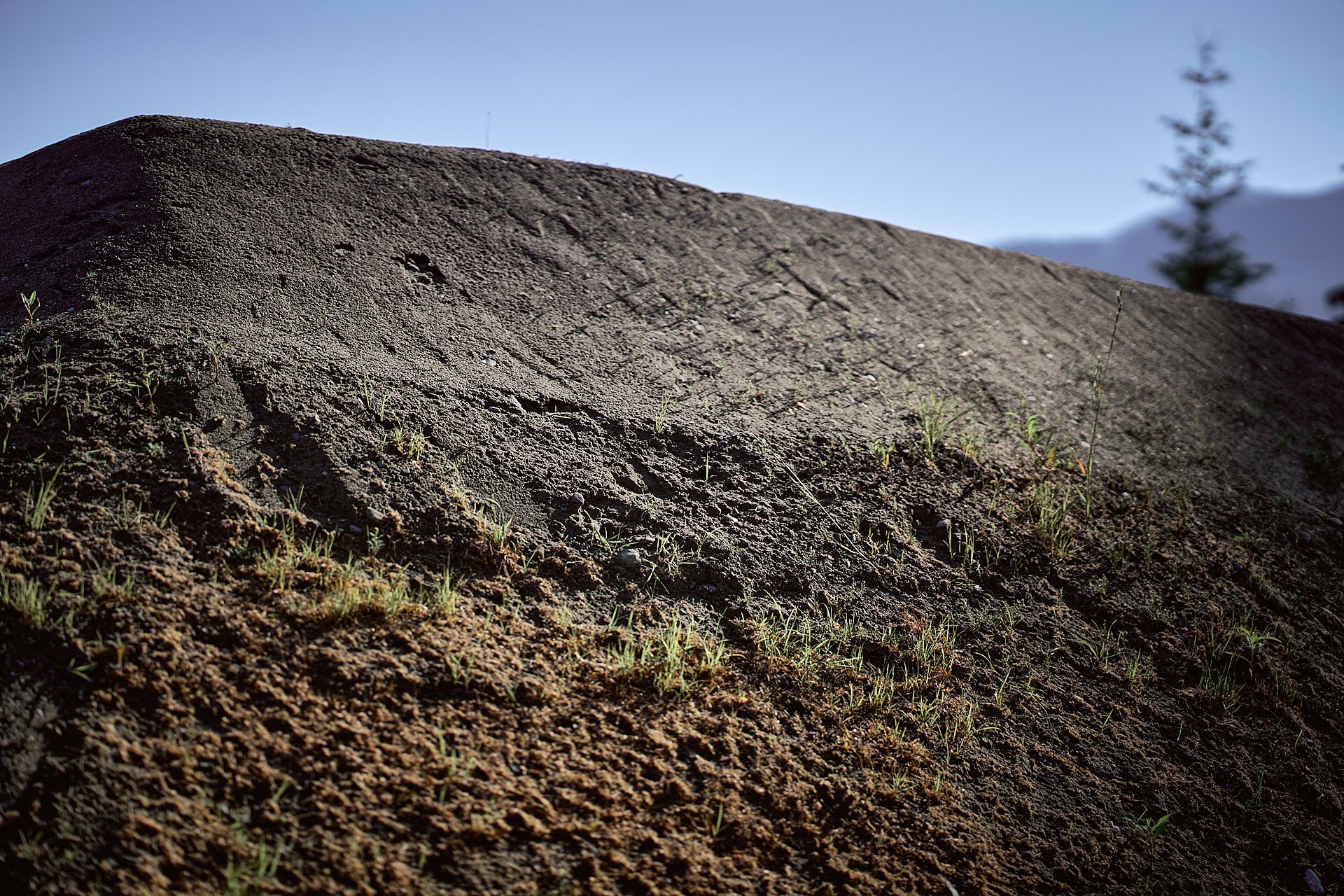
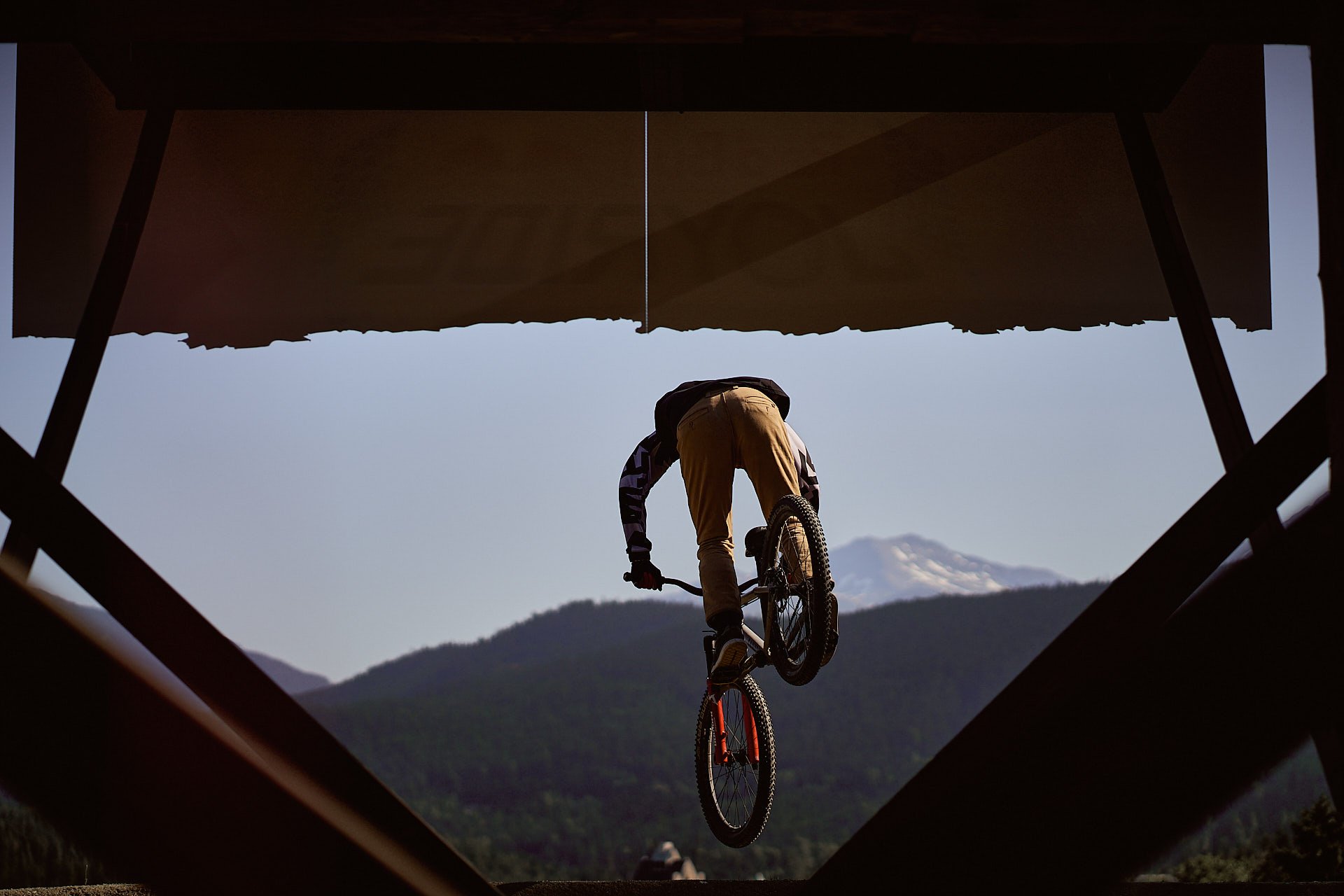
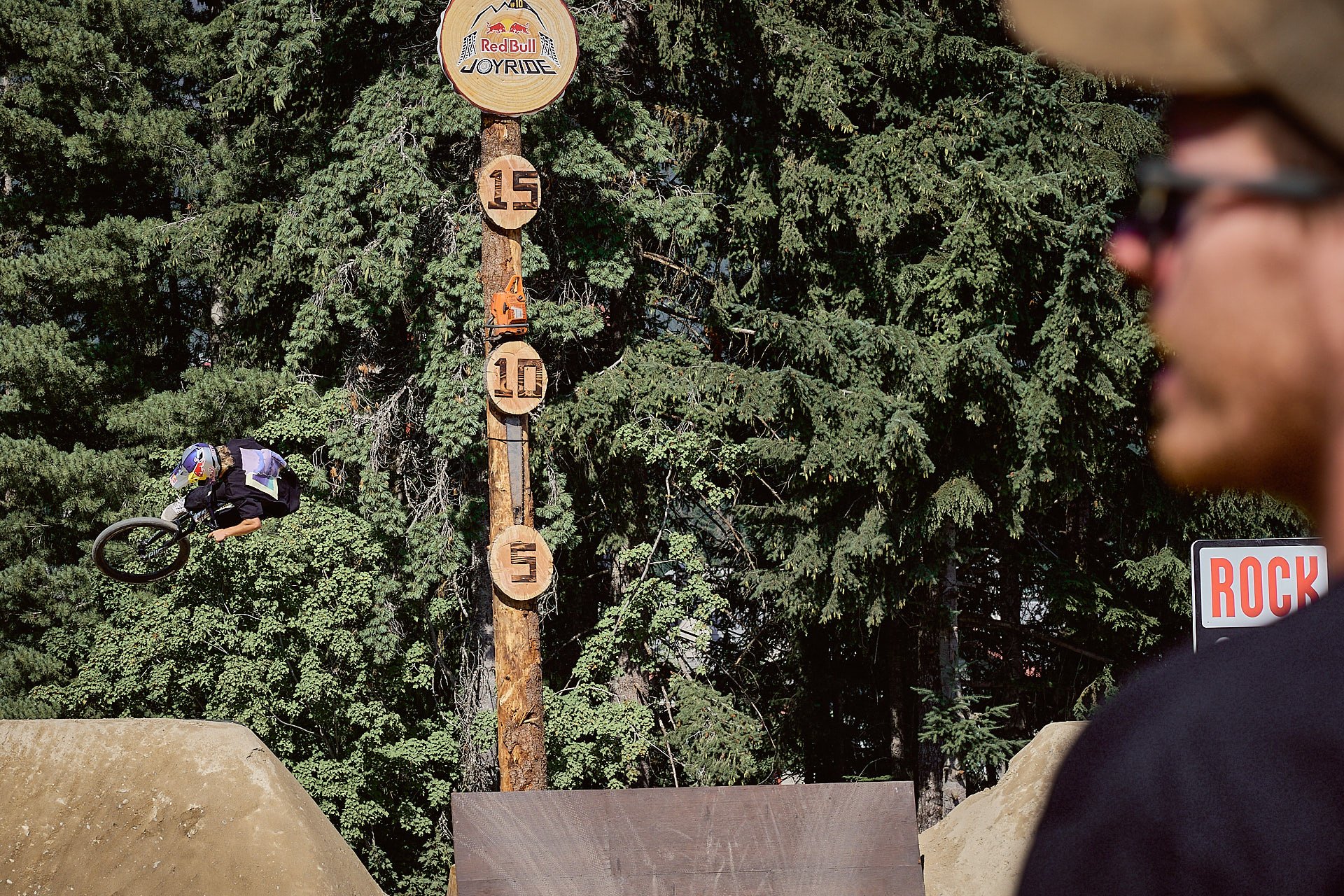
This next audio clip is the rest of the chat.
So why don't you tell me what, you know, we're standing here looking down across the whole course, are there any particular parts that were more challenging or trickier to figure out?
Honestly, the whole course this year, it's changed so much like we have roughly the same footprint. But like we've never had a drop into a whale tail, let alone a dirt whale tail. We've never really done like the what we've done in the past, but it's been a number of years where we split the course into multiple lines and have them come back in the sphere is new, the quarter pipe is new, the final drop is a little different than what it's been. So it's just, it was really tricky just to lay everything out and get the spacing, correct. That's one of the big challenges on this course is because it's so long, if you start building from the top down, it's really easy to have everything jam-packed and be finished by the time you're halfway down the hill, right? So being able to just get the spacing for everything and stretch the track out for the length that it actually has to be, is a big challenge. And then also just like because we haven't built stuff like this, figuring out where this pile of dirt actually needs to go to, you know, link up to everything. So it's shuffling things around a little bit, building it, building something else, going back tweaking. It's a lot of like, research and design, as you're going through. You're constantly playing with things just to get it all to line up.
I said I wouldn't get too biographical. But how many years have you been involved in the design and build?
I started working with Joyride in 2015. And then since then, I've slowly just kind of moved into a position where I've helped with design for a little while. to Now I'm fully designing and running the builds and stuff like that. So it's been like a slow progression over the six, seven years. But yeah, it's six, seven years I've been doing it.
And what do we call you now? Do you have a title?
Not really just a head builder here, I guess. Yeah.
What's, how does your working relationship with Paddy work now? How does that delineate?
Paddy and I have a really, really good working relationship, like I worked with him for five, six years, just under Joyride. And then COVID happened. And the whole Joyride thing kind of went a little dormant. Just trail building on Whistler Blackcomb, and obviously the event here. So I started my own company. And now I'm contracting to Patti for the build, which is great for both parties, you know, it kind of just lets everybody have their cake and eat it too. He's able to put a little bit more on my plate, he's able to step away a little bit more and do more of his machine operating stuff outside of the contest. So yeah, it's great.
So we talked about the quarter pipes and the dish. Any other insights from the as a former rider and the designer, and now watching the riders practice for several days... You know, other than a few of those features, what do you think are going to be some of the separators and some key moments?
Honestly, I think it's just like the whole course, as a whole. We've made a really technical course here, whereas lots of the other courses are fairly autopilot. And in courses where they're really easy, you see a lot of riders doing their hardest trick, hardest trick, hardest trick all the way down. And you end up having a lot of crashes because people are doing their hardest tricks. So you know, the likelihood of them actually putting a run down is a lot lower. Whereas here in past years, at this time, people have known what they're going to do for the run. And they've just been practicing the run. But I think half the field right now, still don't really know what exactly they're doing just because the course is so different and it's forcing riders to think of and look at it a different way. And they're really unsure of how they're actually going to build a run on the course. And I think that's really good for the sport, refreshing for the riders. And I think it's going to be really refreshing for the crowd too, because people are hopefully going to be seeing runs that they haven't really seen before where you know, you can't, you can definitely we have the two jumps where you'll see some banger moves, but then everything else is kind of a little smaller in one more technical, where people can still do their big tricks, but they've really got to be on it. So they'll have to really plan out what they're doing where in order to maintain speed and continue on and ride the next thing, you know? So it might change the way that people are looking and riding the course, which hopefully will build a better show for us.
And generally positive feedback for that, like any any riders expressing concern about it, or you know, that they're not as stoked?
No, it's, it's funny, I, this is the least amount of complaints that I've ever had in the course. So we're really happy as the guys that have built the course. I think the riders are really happy and really happy to see a change and hopefully a change in the right direction. With the with the courses and yeah. ...Certain sections that you know, we have to keep going back to and patching up but the boys do a really good job of keeping everything watered, tacky, so it doesn't erode too quick. And this is honestly the best, other than the 10s of millions of rocks that are in it. It's actually
Deniz Merdano - And is the dirt, it's from here?
Yeah, it's just all just the ski hill. One flat hill when we start, we have to put all this terraces and elevation and everything into
DM - The dirt wasn't brought in?
No.
What about the crew? How many since May? And how many, when does it ramp up? Or does it like? How does that look?
Yeah, I generally have like, kind of two machines just bulking for two or three weeks before the hand guys get in, just so we can stay ahead of them for the rest of the build. And then I have four hand crew guys, like shovel rake guys that do all the final shaping and sifting of all the dirt and everything, and one carpenter. And I'm really fortunate a lot of those guys are really talented riders as well. So they are able to help and give a lot of input on layout and spacing and how things look and all that. So we all kind of work together as a team. I definitely like the course wouldn't be what it is, without the guys on the crew for sure. So.
And you said you started in May, when in May, and has it been full time?
Full time eight hours and day, 6, 5 6 days a week. Off the record question if you want it, but if you had another week or two, would it have been much different than it looks right now? So yeah, I started the first week of May. And I spent a week and a half just moving snow, we had a really late melt this year, which put us back a little bit. And then we also had a bunch of weather. Like generally we kind of always account for six, seven days to lose, you know, due to rain or whatever. And we had I think by the end of July, like 12. And those are days that you just don't get back, right, like Crankworx is happening now, the contest is this day where you have a firm deadline. So if you miss a day, you miss a day, and you have to try and like make that up somehow. But it's really hard. So we had a really jam-packed two weeks prior leading up to Joyride here just trying to get everything done becuase we were a little bit behind. But it all all came together finally, Nooo. Really, it's just the little things, right? Like, it's easy to get the course running. But it's like just all the little things that probably no one else notices, but you know, just like tidying up of rocks and having the area a little cleaner, and you know, things like that. Like there's a lot of things that obviously everybody that's on the crew - yo! (huge trick thrown in the background) - they take a lot of pride in their work. But we're also because we're on a deadline, it's like, there's a lot of things that you just have to leave behind that just grind your gears, that they're still there and you haven't buttoned up. So those are like the things that if you had more time, you could just
Get a little bit better.
Yeah, exactly. Yeah. You know, but we just don't have the time. You land and you have to be on the brakes a little bit before this first jump, because it's, you know, a little quick, but you can't move this pile of dirt or that landing with two days left, you know, so you can make minor tweaks and adjustments and, but then you're kind of stuck with what you have. But that's the great thing about being able to tear down and rebuild next year is now we know now I can adjust this elevation for next year and, you know, improve on things that could be better so.
Do you keep taking measurements and keep them?
Not really. I honestly I don't pull out a tape measure until the production crew asks for all the measurements for the broadcast. Everything is just...yeah, by feel jump out, look at it, scale, visualize that's how everything is, is kind of built.
You mentioned the build crew having a lot of talented riders. How much are you on a bike on this stuff testing it out.
We get not a ton of time to ride. But we do, we're probably on 6, 5-6 days, kind of throughout, we generally try and like build a little section, ride and test it, build another little section. But as soon as we get something rideable, we try and test it as quick as we can just so we kind of know going forward, if that's gonna work. And we have a better idea of speed exiting things, too. So for the next feature that we build, we're able to kind of figure out what we need to do and how big the gaps need to be, this and that. It would be amazing if we could have more time riding, because it would just make the course better. The more that we're able to ride and test and feel it out, the better the track gets, you know, because the more adjustments we can make and fine tuning and stuff like that. We don't have to wait for the riders to come in and get feelers on and be like this needs to change this needs to change, we can get all that done prior, you know.
Ok, Justin, we're looking at the dish, tell me...you mentioned it before, but tell me about how this one came to be and what you think we're gonna see out of it.
Yeah, Brandon and I did a project back in 2021, called Realm, where we designed and kind of schemed up a bunch of new interesting little features that we've been thinking about, um, the dish was one of those. And then the project had a fan-voted feature to come into this year's Joyride. The dish won, so it's here. And it's, it's definitely an interesting one, like, it's one of those features that it's really fun to ride. If you're doing a video part or just playing around on it, you could play for hours and hours, but it's gonna be really, really hard for the riders to find a way to ride it and get a trick in or out that's consistent enough for a contest run. One of the great things about it is you can ride it so many different ways. So. And there's a few easier ways to ride it, which I think like the way Nicholi just did, where you're jumping in jumping out, we'll see a lot of that. But I think the people that take a different approach and ride it uniquely will be rewarded this year for it, because it is such a high risk thing to do. And I think we're going to hopefully see a lot of interesting things that people necessarily wouldn't have thought would be in a slopestyle run, you know, like whoever thought that a loop-de-loop in a dish would be back, you know? Because there has been like little renditions of this in the years, like, I think in 2008, I want to say? Maybe it was 2009 they had like a wall with a little bowl, tea cup thing in it, but it wasn't really utilized. And not really built in a way that you could utilize it. So I think this is just something new and different. And it's, you know, it might not work long term, but at least we tried. You know, it's I think it's really important to like, try new things, and just see what takes and what doesn't, because otherwise things get stagnant, and people get bored.
This is the same dish? (from Realm)
No, this is a completely new dish. So the old dish was, it was built really well. But we didn't have the budget or the time, or the knowledge to - you know - it was really flims- not flimsy but it had a lot of like twist and shake in it. And it was a really challenging one to build. This we put a lot of time and effort and research into actually doing it properly. Like we had a full 360 CAD drawing of this. We had a fabricator who worked for basically like six weeks putting it all together and then had it brought out and yeah, so and then we also were able to like tweak the dimensions and everything a little bit better to make it more accepting for riders than what the last one was. So a lot better version two is better than version one for sure.
And you said something before about course length and spacing out features. Do you know, or do you consider overall course length and has that changed from year to year very much, you know, like, depending on how you route the course?
Not really, it's always generally the same like we have pretty well the same start start spot and the same finish like we always want to finish in that finish corral just obviously for the crowd and the show and everything. I'm sure it varies a little bit just on, you know, the switchbacks in this and that but it's always roughly the same, same length. It's definitely like the longest track on on the circuit by far. But I think we've done a really good job at like, managing how much energy the athletes have to expend out here. Like there's not a lot of pedaling. It's not like they're sprinting down and getting winded the whole way. So, yeah. Brandon (Semenuk) who was out here riding, riding yesterday during practice a little bit, just like putting on a clinic. So funny.
Wow. Have you got... Have you got a podium pick?
Ooooo. I don't know, man. It's tough. Godsiek has been on a tear lately. And he's, I wouldn't say a sleeper but he's like he hasn't been doing much in practice. He's one of those guys. He has so much like control. He's such a talented writer that he could really excel on a course like this. Obviously a meal is one to watch. But I think there's some some guys in there like Lucas Hooper is doing like a lot of like really cool things in the dish. He's he'll be one to watch for sure. And, yeah, I don't know. It's it's really tough to pick a podium.
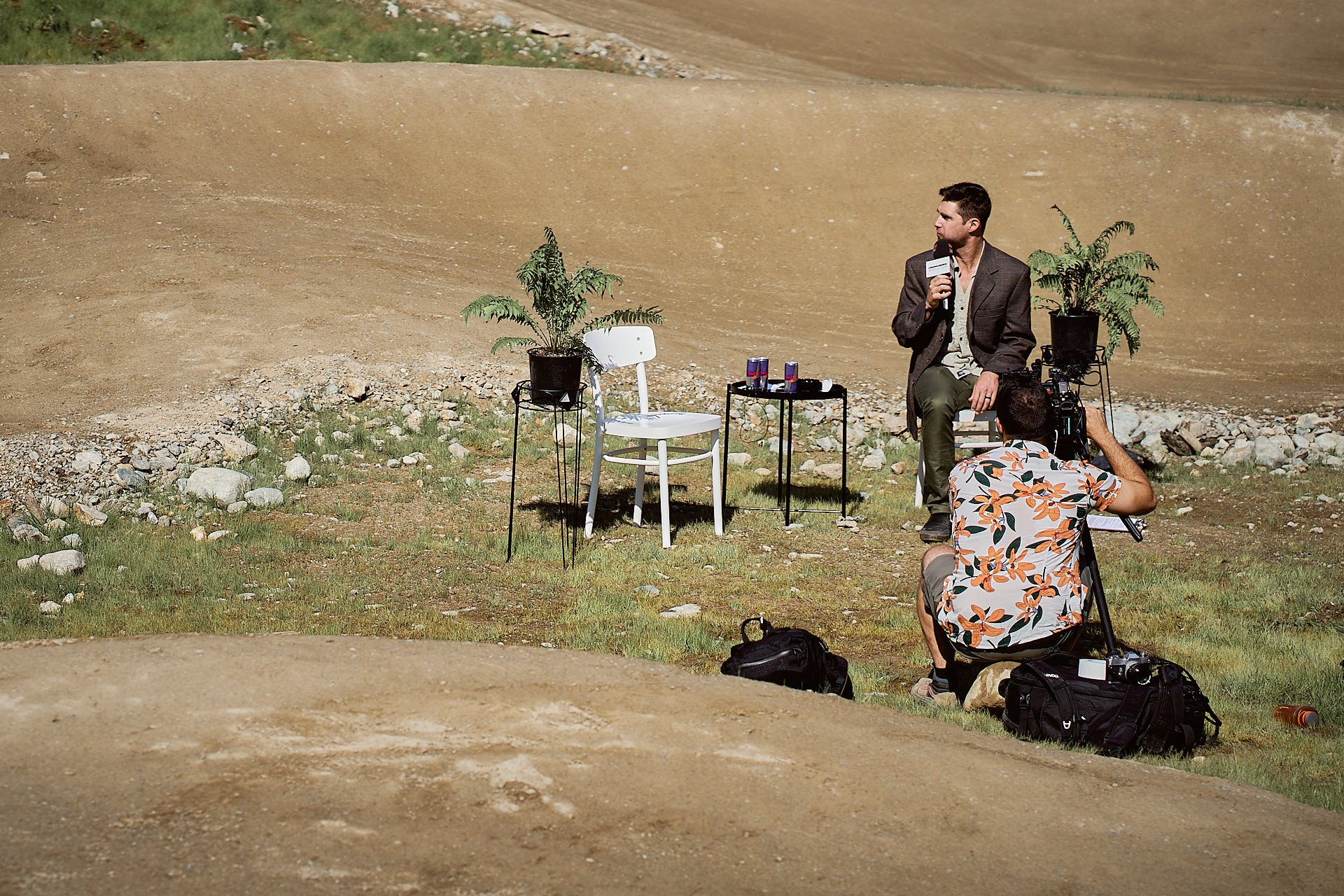
Cam McCaul looking around for a victim for 'Between Two Berms'.
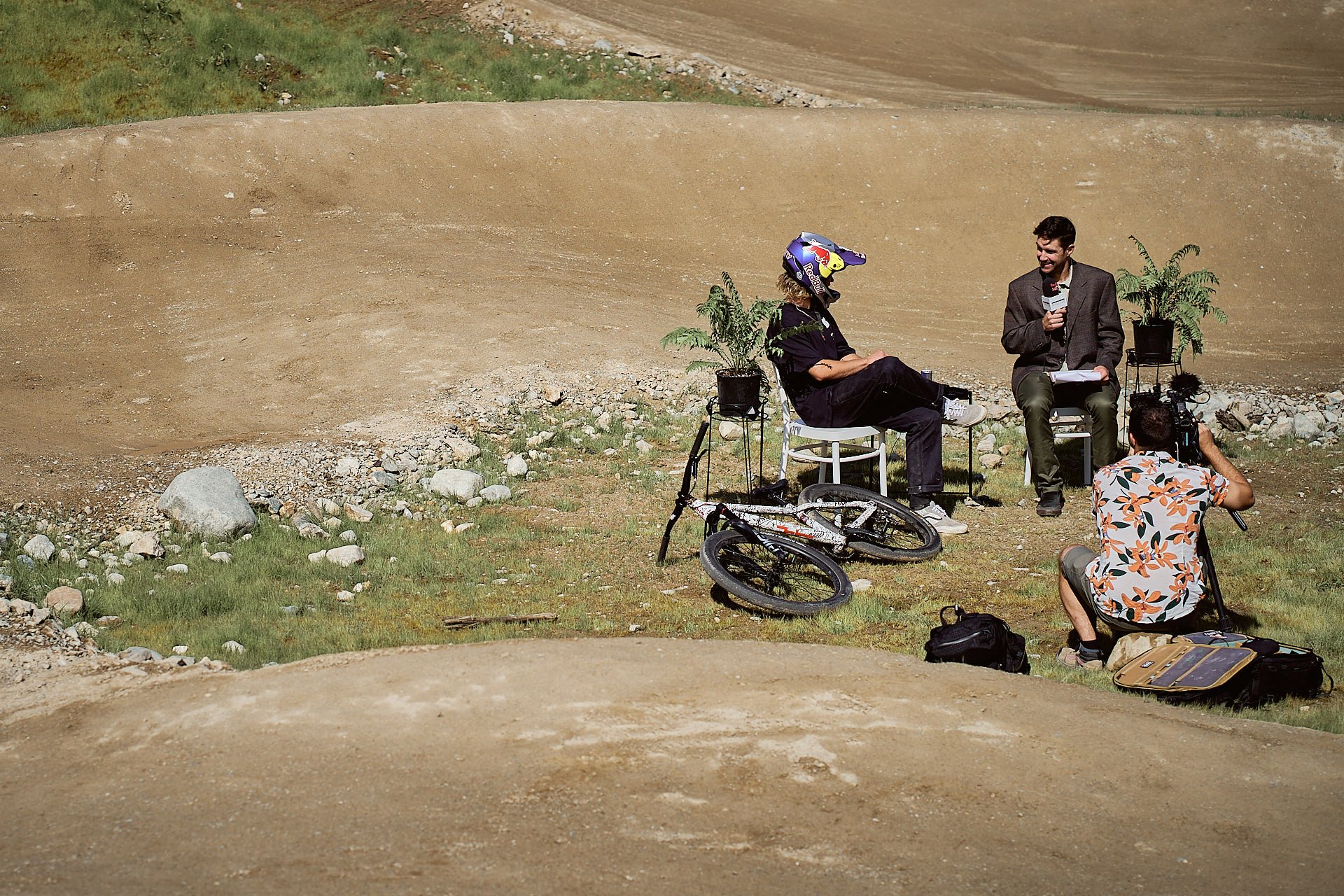
Got one! Kevin Fedko.





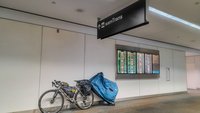

Comments
Please log in to leave a comment.